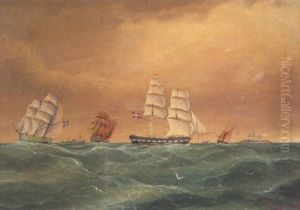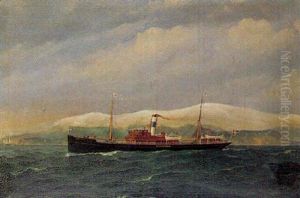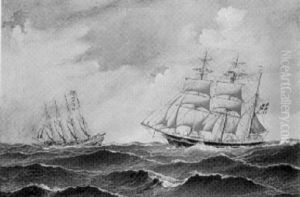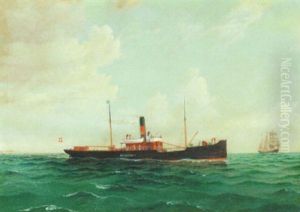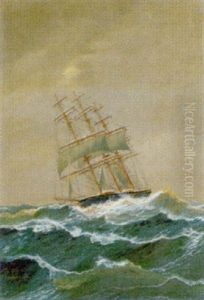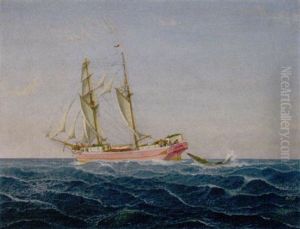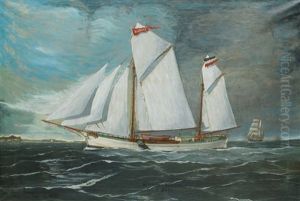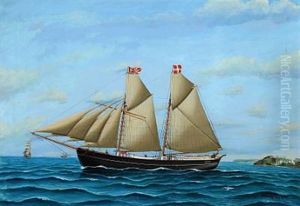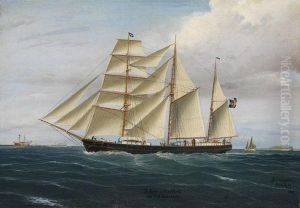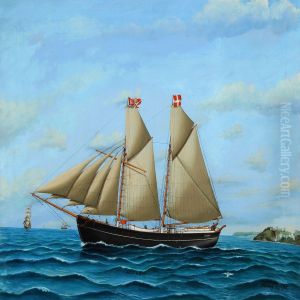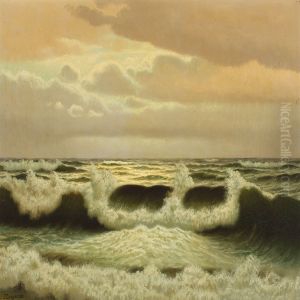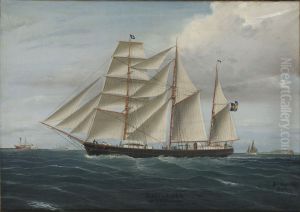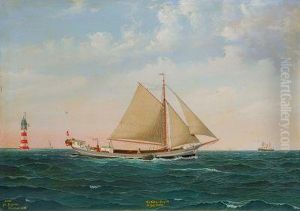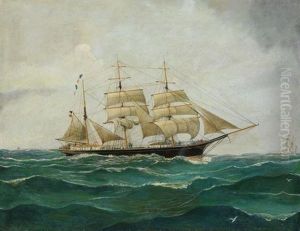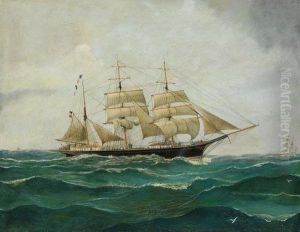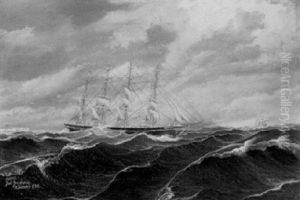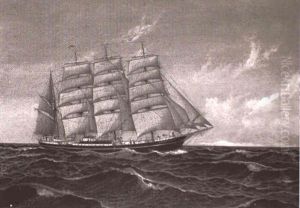Julius Gregersen Paintings
Julius Gregersen was a Danish artist known for his contributions to painting during the early 20th century. Born on March 28, 1887, in Denmark, Gregersen showed an early interest in art. His passion led him to pursue formal education in the arts, where he honed his skills and developed a personal style that would later be recognized by his contemporaries and art historians alike.
In his early career, Gregersen was deeply influenced by the Symbolist movement, which was prominent during the late 19th and early 20th centuries. This influence is evident in his use of dreamlike imagery and his exploration of themes such as mythology, emotion, and the human psyche. He imbued his work with a sense of mysticism and often depicted scenes that seemed to transcend the boundaries of the material world.
As Gregersen's style evolved, he began to incorporate elements of Expressionism, another significant art movement of the time characterized by its emphasis on subjective representation and emotional experience. His paintings became known for their vibrant colors, bold brushwork, and emotional intensity. Despite this shift in style, his work continued to reflect a deep interest in the spiritual and metaphysical questions that had fascinated him from the beginning of his career.
Throughout his life, Gregersen struggled with financial difficulties and health issues, which affected his productivity and visibility in the art world. However, he continued to create art that was both personal and profound, leaving behind a body of work that was appreciated for its unique vision and emotional depth.
Julius Gregersen's contribution to Danish art was cut short by his untimely death on May 26, 1932, at the age of 45. Despite his relatively short career, his paintings remain a testament to his talent and his quest to capture the complexities of the human experience. Today, his work is recognized for its originality and is studied by those interested in the Symbolist and Expressionist movements, as well as those who appreciate the broader history of Scandinavian art.
